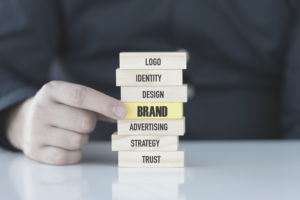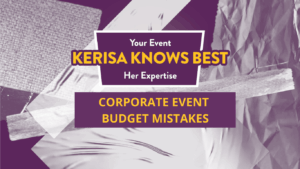
A successful trade show requires a lot of planning, strategy and attention to detail. And there are a lot of stakeholders and partners involved in hosting a successful event. Different forms, documents and presentations will be needed to communicate your vision to the team.
A creative brief is one of the more important communication documents in your repertoire. The brief articulates your needs, your vision, and requirements and gets your team and your exhibit house on the same page. A good, strategic exhibit house will likely have a creative brief template for you to complete. They may even complete one as a result of Discovery meetings with you and your team. If they don’t and you need to write your own, there are several elements it should include to ensure your booth is translated from paper to structure. And that your visitor’s experience is everything you hoped it would be.
LOGISTICS
Your creative brief should include necessary, simple information such as the show name, the date of the show, venue location, booth number, orientation, and contact information for the designer’s primary point of contact. This helps the designer stay organized throughout the course of the project.
THE “WHY”
This is the fundamental reason you’re exhibiting at all. Why are you attending the trade show, and how will you measure success? What brands will you be showcasing? What problems are you trying to solve for either your brand or attendees with this booth? Answering these fundamental questions will get the creative juices flowing.
THE NEEDS
What deliverables will you require for this experience? This section will outline your needs for the designer, such as audience information, brand information, and environmental information. You should include the type of build you’d like (custom, rental, existing property update, or undecided), the configuration, and size. Your timeline, the primary function of the booth, budget, and timeline should be defined.
The budget is a critical element of the brief. Be clear on how much you have for the booth structure, how much is available for engagement and how much is available for services. Often brands don’t want to divulge budget information for fear that the exhibit house will not look for economical solutions. But it is far more frustrating to fall in love with a design that is significantly over budget. At the very least, give your exhibit house budget ranges for the design.
Who is your target audience? What demographic and behavioral details can you provide to the design team. If you have any research or findings, it’s extremely helpful to include this in the brief. An excellent exercise to complete before submitting a brief is to create audience personas. This will help you narrow and strategically target them with the right message at the right time not only at trade shows but across all your marketing efforts.
This section should also include pertinent brand information, such as brand position in the market, what sets you apart from the competition, new features and benefits, tagline and focus. Your brand’s personality and voice should also be defined.

THE STRATEGY
This section will define how you expect to reach your goals. You need to determine how your attendees will experience your products and services. Will you be conducting demos? Will you be hosting one-on-one meetings with prospects? Will you hold group presentations in the booth?
You’ll also need to outline the actions you want attendees to take once they’re in your booth, as well as any outside efforts like sponsorships, hospitality events, news or PR, and campaigns that are happening in relation to the show.
MANDATORIES AND REQUIREMENTS
There will be elements you’ll absolutely need for the experience to be successful. This could include display screens, special lighting, or charging stations. You may also outline any venue requirements the designer should be aware of, such as booth height or hanging sign restrictions. Also, any creative elements you need like specific branding can be outlined here.
SUPPORTING DOCUMENTS
If you have any images that inspire your vision, include them so the designer can think about the look and feel of your booth. You might also include any supporting documents such as brand guidelines, creative guidelines, or campaign information they can reference.
Whether it’s required or not, a creative brief can make all the difference when creating a trade show booth. If you’re in need of a template, we have one to help you get started! If you need a little extra help bringing your ideas to life, we’re here to help.









